Do you know where the oldest desert in the world is located? What about the plants and animals that are capable of calling this region home? Located along the coast of South Africa, the Namib Desert roughly translates to “vast place”, and it is technically the oldest desert in the entire world. But just how old is this desert, and what can possibly survive in a region like this?
In this article, we’ll go over everything you need to know about the Namib Desert, including how much rainfall it gets per year, how hot it is, and who lives there. We’ll also take a deeper dive into some of the unique plant and animal species capable of living in an arid environment like this one. Let’s get started!
Meet the Oldest Desert in the World: Namib
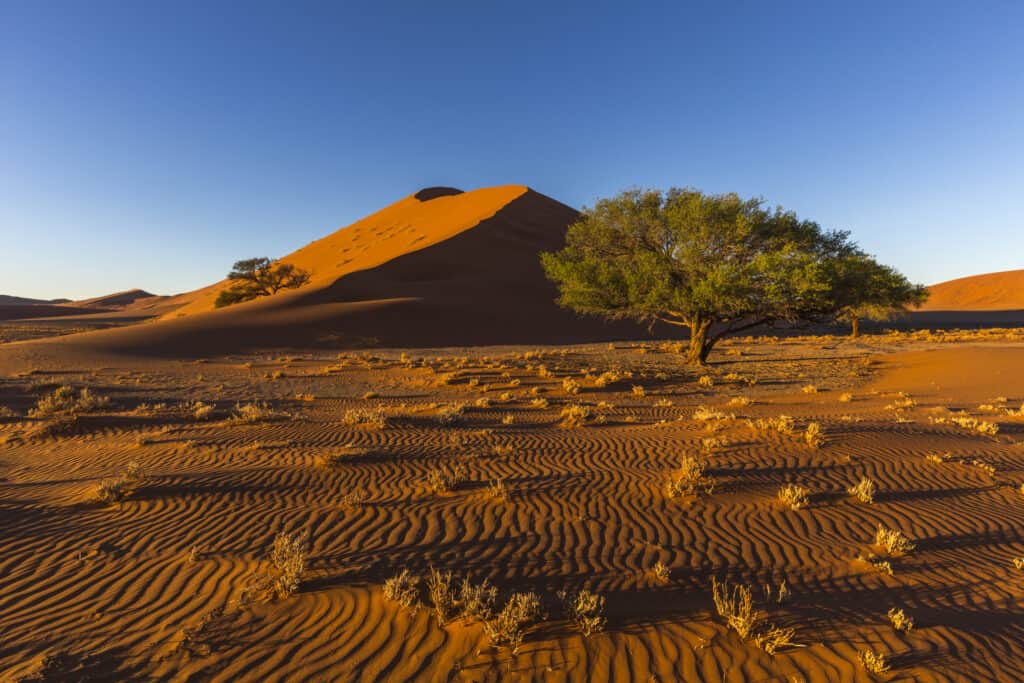
Given its proximity to the coast, the Namib experiences dense and souplike fog for half of the year on average.
©iStock.com/HannesThirion
The Namib is a unique desert for a number of reasons, not even including the fact that it is estimated to be nearly 80 million years old. Besides maintaining an arid and desert-like environment for millions of years, the Namib features heavy fog along its coastline for much of the year, with increasingly hot temperatures the further inland you go. But just how hot does it get in the Namib Desert?
Along the coastline of South Africa, the Namib averages anywhere from 50-70 degrees Fahrenheit, maintaining a steady climate. However, as you travel inland, across large swathes of sand and nothingness, the Namib gets a bit hotter–quite a bit! Temperatures during the hottest parts of the year exceed 110 degrees Fahrenheit with ease, and nighttime temperatures can get quite cold.
However, the fog found in the Namib Desert makes it even more fascinating. Given its proximity to the coast, the Namib experiences dense and souplike fog for half of the year on average. This fog is so impassible that shipwrecks are common along the coastline to this day. But this fog is necessary for sustaining life in a region like this; otherwise, the Namib only sees half an inch of annual rainfall on average!
What Can Survive in the Namib Desert?
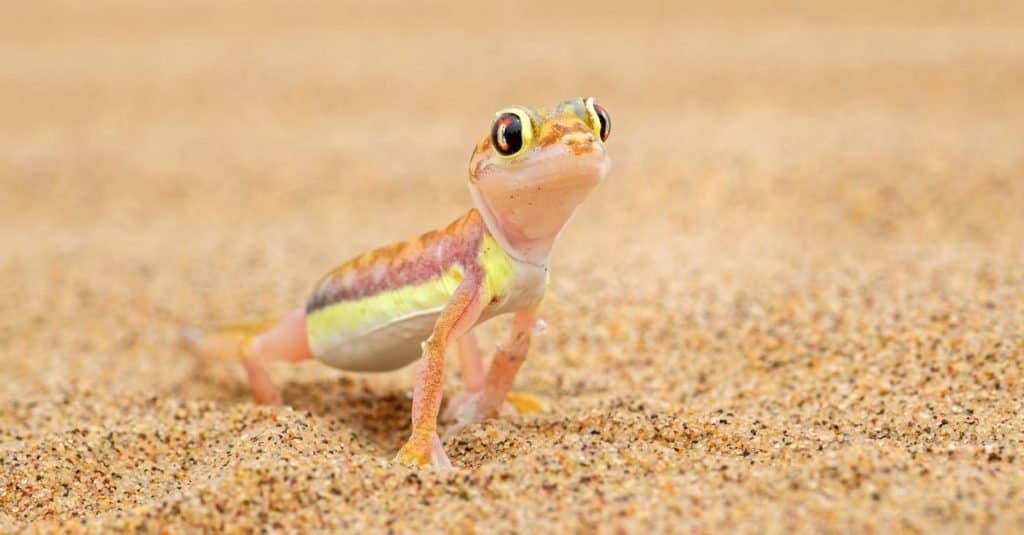
The Namib is likely one of the most impressive deserts in the world in terms of its native species, especially when you consider plants and animals that have unique adaptations in order to survive its climates.
©David Havel/Shutterstock.com
Water is key to life, but the Namib Desert doesn’t see a lot of it. Despite this, the Namib is likely one of the most impressive deserts in the world in terms of its native species, especially when you consider plants and animals that have unique adaptations in order to survive its climates. Some of the animals that live in various locations in the Namib desert include:
Plants in the Namib Desert

The Welwitschia mirabilis is technically a living fossil and endemic to the Namib Desert.
©Vladislav T. Jirousek/Shutterstock.com
Any and all plant life that calls the Namib home likely only calls it home for a short period of time. However, there are some plants capable of surviving on the fog and limited moisture offered by the Namib Desert. One of which is known as the Welwitschia mirabilis, a unique and odd plant that is one of the only plants in its genus, with specimens estimated to be close to 2,000 years old. It is a living fossil that thrives on groundwater and fog, alongside a few other plants in the Namib. Some of these plants include:
- Baobab trees
- Nara plants
- Buffalo thorn trees
- Bushman’s hat plants
Animals that Live in the Namib Desert
There are a surprising number of animals that live in the Namib Desert. Many of these live in the Namib-Naukluft National Park, one of the largest game parks in South Africa. While the arid climate keeps most animals away, there are some creatures specifically adapted and endemic to this region.
Namib Desert Beetle
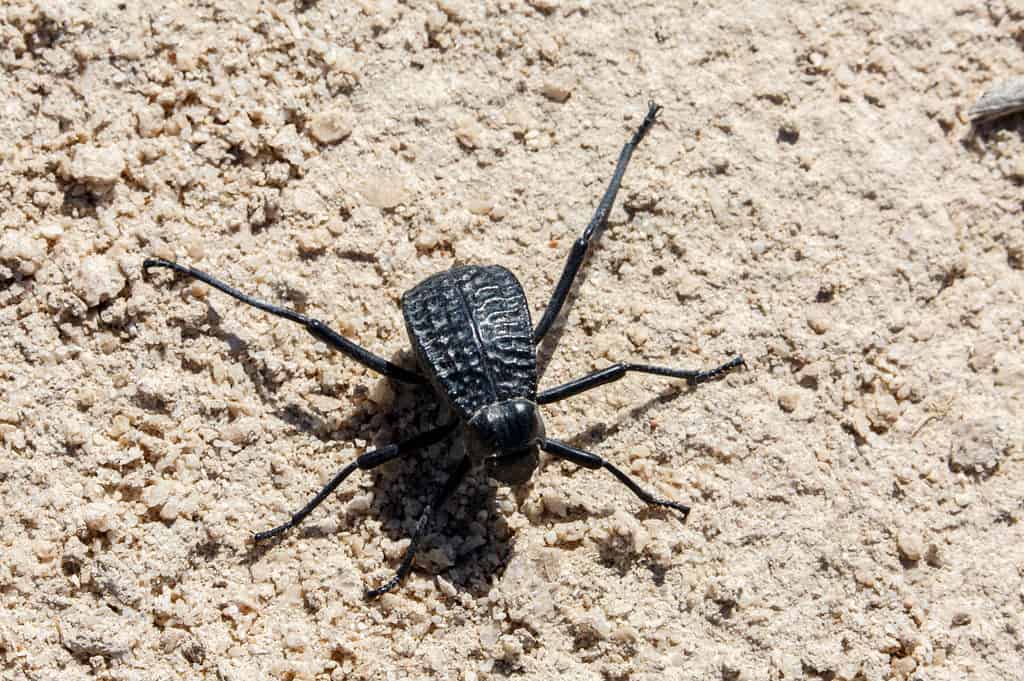
Also known as fog beetles, the Namib Desert beetle collects water by doing handstands.
©Manu M Nair/Shutterstock.com
Also known as the fog beetle, Namib Desert beetles are one of the most well-adapted creatures in the entire region. There are a few different species of fog beetles found in the Namib Desert, but each type utilizes its unique back to harvest water and dew from the morning fog. It performs handstands which allow water droplets to fall down its bumpy back and into its mouth!
South African Oryx
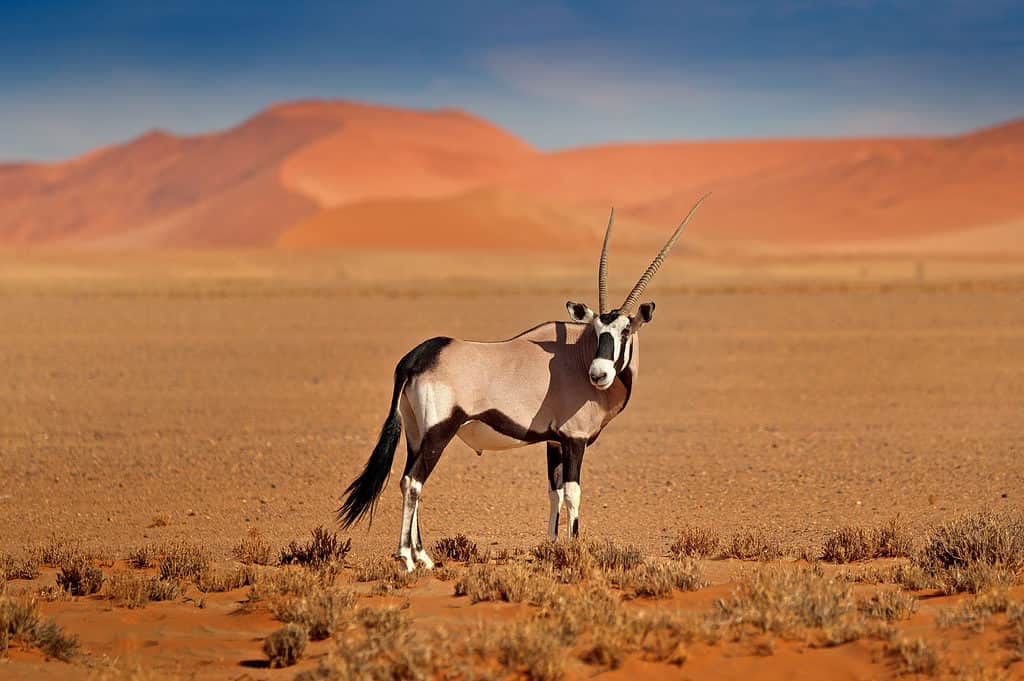
Also known as gemsbok, oryx in the Namib are adapted to desert life.
©Ondrej Prosicky/Shutterstock.com
Common throughout Africa, the oryx is also known as the gemsbok. This particular type of antelope species is well-adapted to desert living, capable of heating its body to over 104 degrees Fahrenheit. The gemsbok maintains a high body temperature but keeps the blood flowing to its brain cool, and it retains water quite well. Plus, the unique coat of the oryx helps it stay cool in the sun, lying down so that most harsh sunlight is reflected away from it!
Black-Backed Jackal
While more sparsely populated in the northernmost quadrants of the Namib, black-backed jackals thrive in this region of South Africa. Capable of feeding on a variety of creatures, black-backed jackals store food to feed on at a later date. This particular jackal species is also monogamous, cubs often trained to care for one another as well as new litters of pups.
Bonus: Some Elephants Live Here Too!
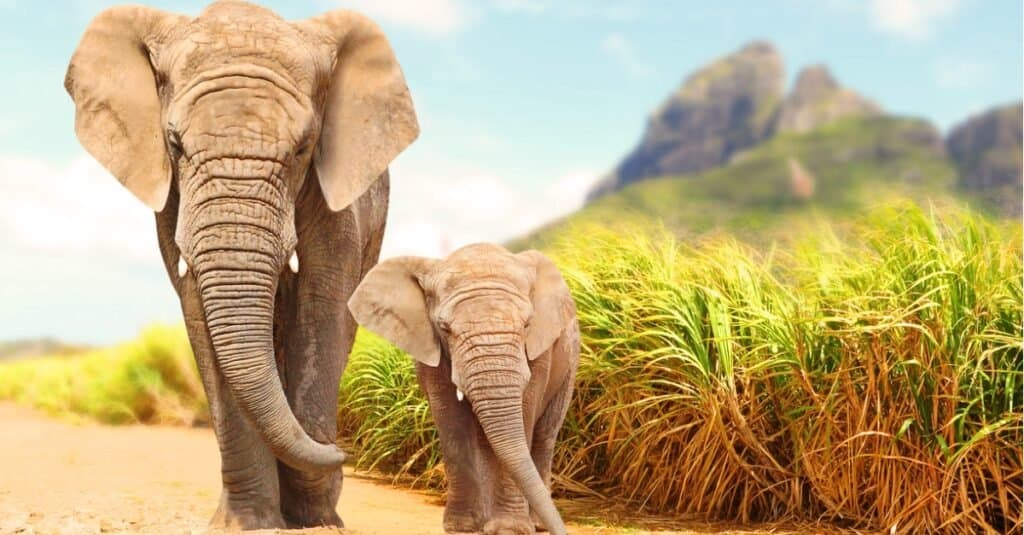
The mating season is a dangerous time for male elephants.
©iStock.com/abadonian
Despite arid and impossible living conditions, some African bush elephants thrive in the Namib Desert. While technically not considered a separate species, elephants living in the Namib have larger feet than the average African elephant. This is because they travel up to 50 miles in order to reach watering holes throughout the desert, though these elephants can also go up to three days without water!
Up Next
- How Tall Are Redwood Trees?
- Discover The 3 Different Types of Redwood Trees
- Giant Sequoia vs. Coast Redwood: What’s the Difference?
The photo featured at the top of this post is © Vladislav T. Jirousek/Shutterstock.com
Sources
- Climate of the central Namib Desert, Available here: https://journals.co.za/doi/abs/10.10520/AJA10115498_484
- Evidence of past climatic change in the Namib Desert, Available here: https://www.sciencedirect.com/science/article/pii/0031018289901132
Thank you for reading! Have some feedback for us? Contact the AZ Animals editorial team.






